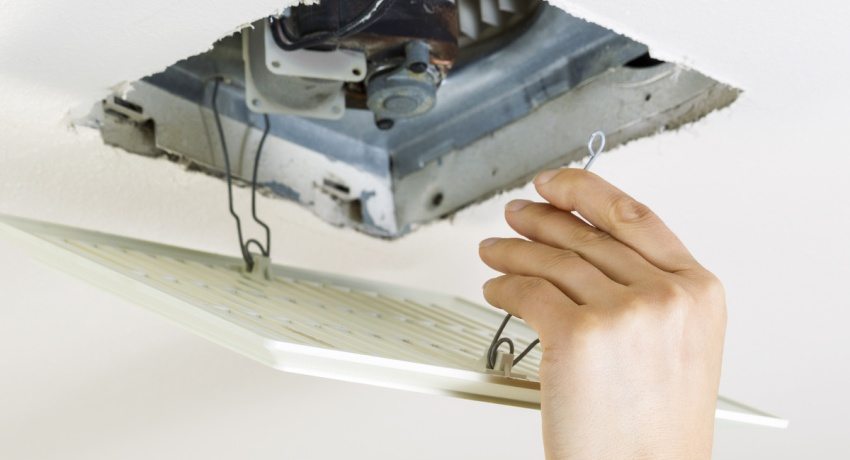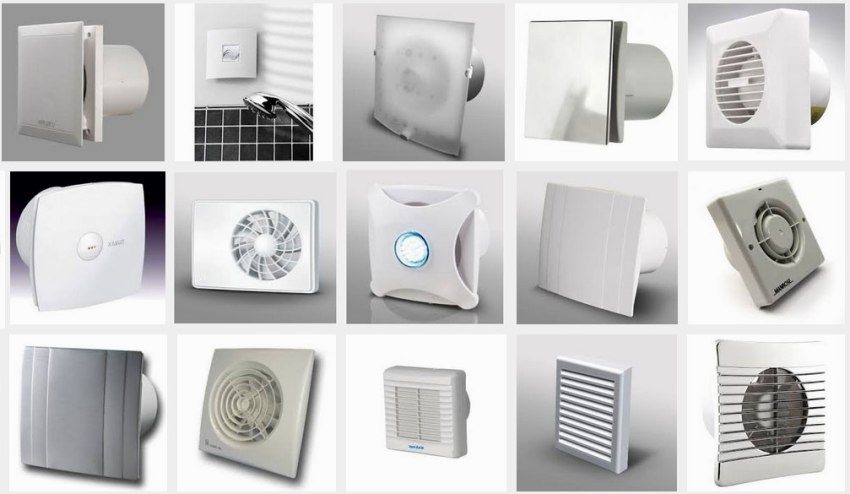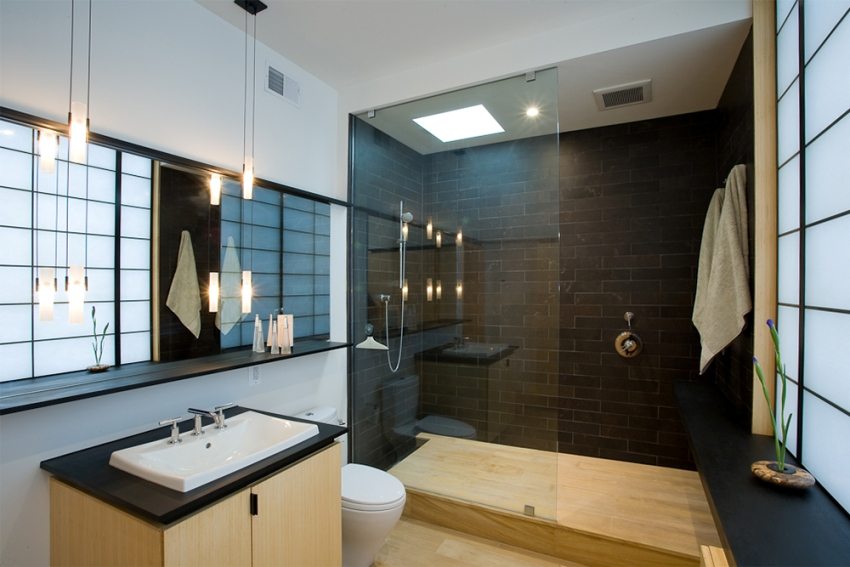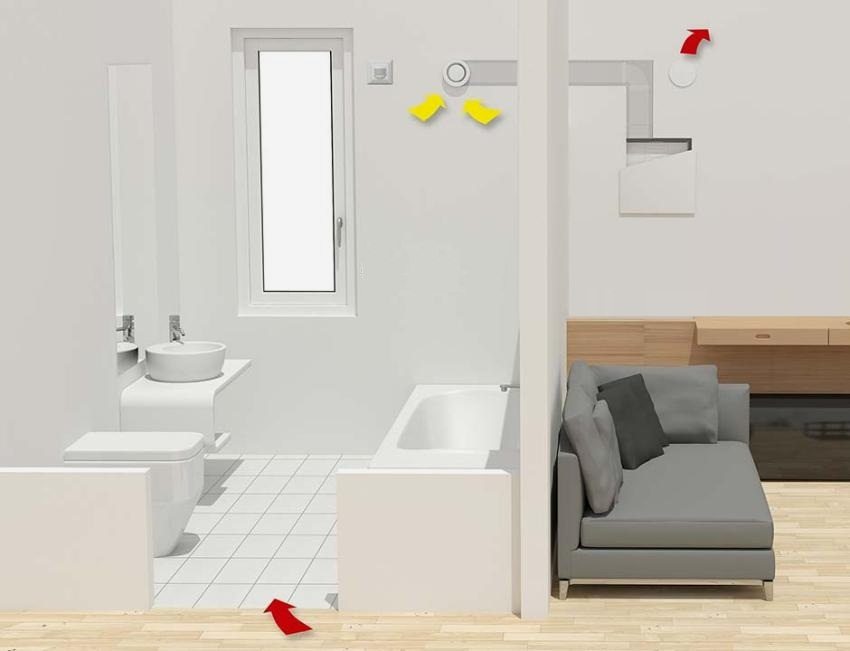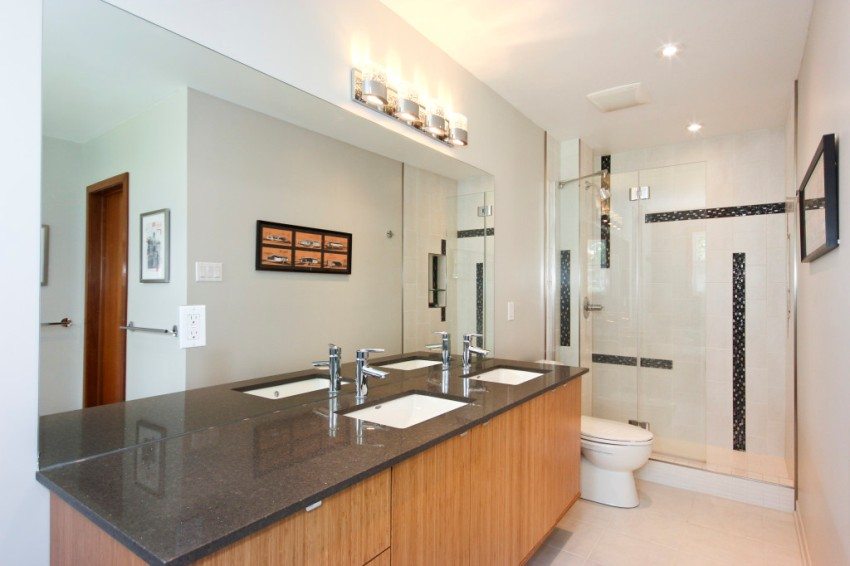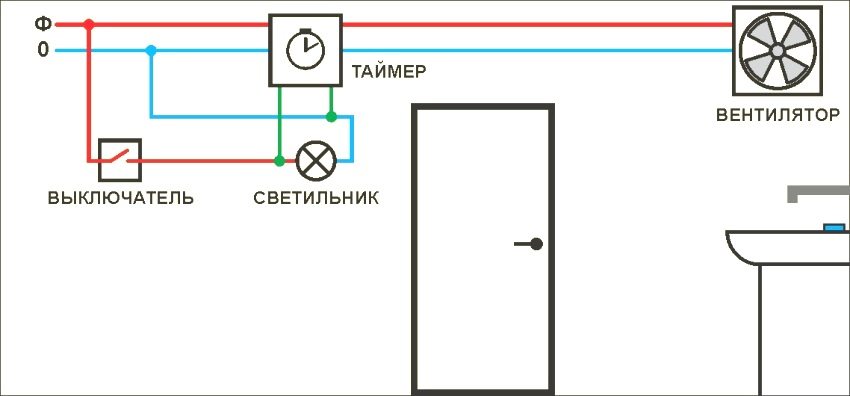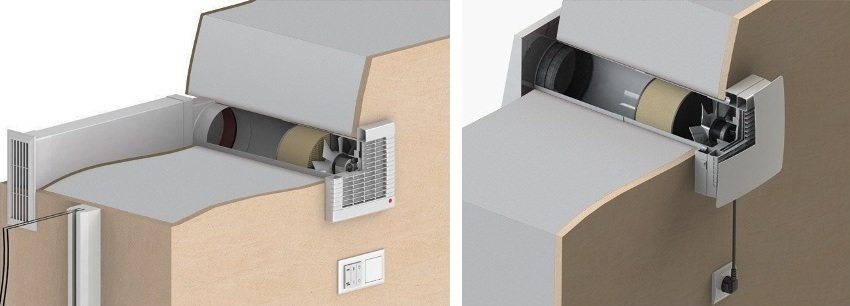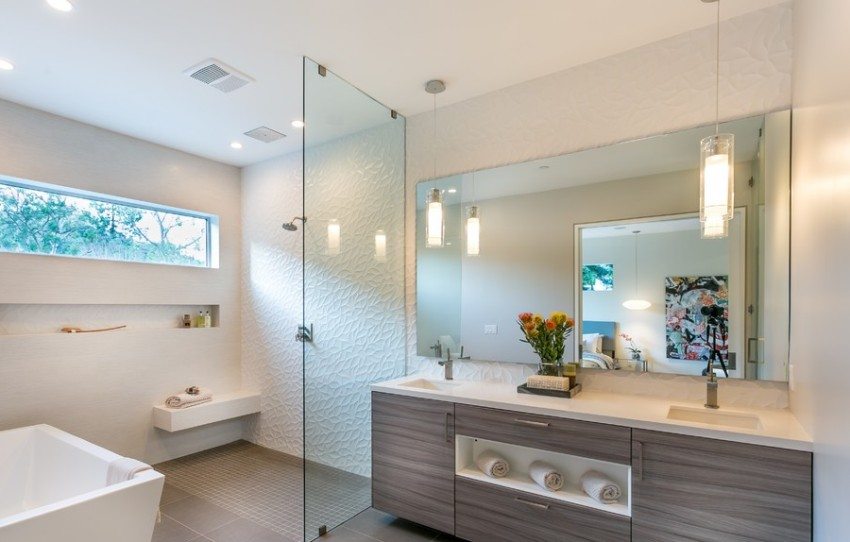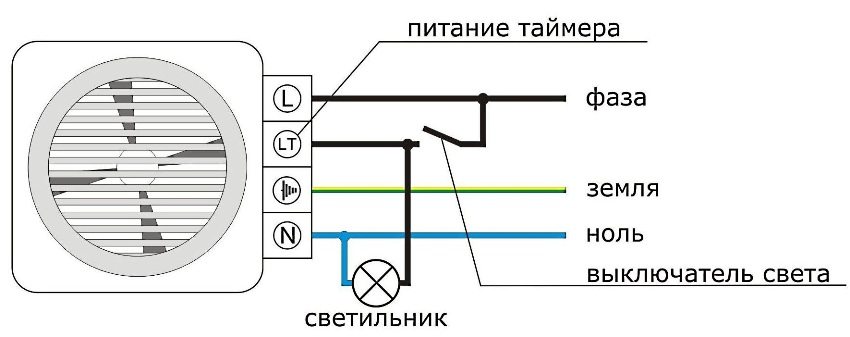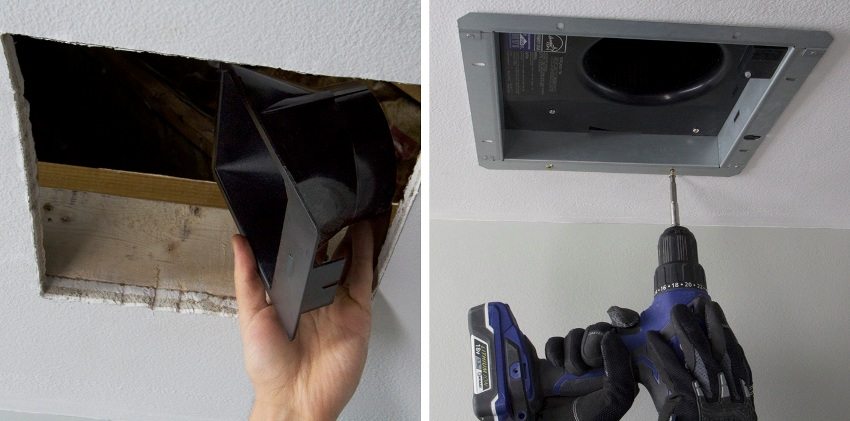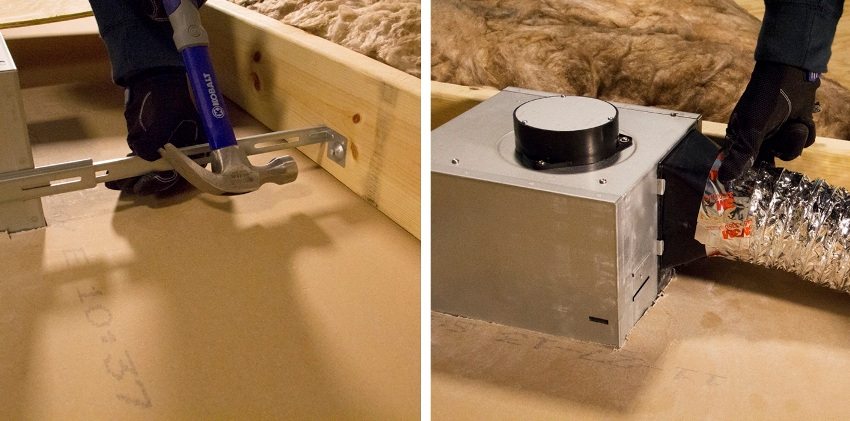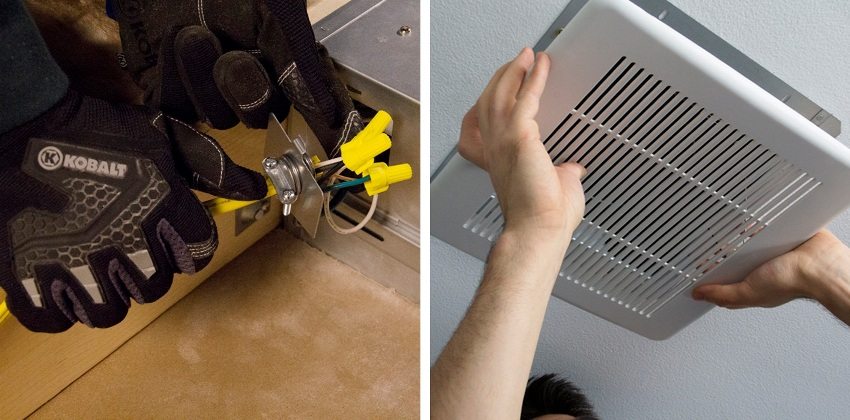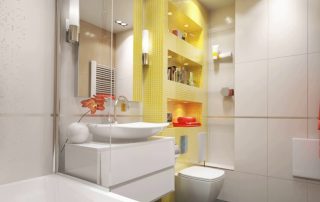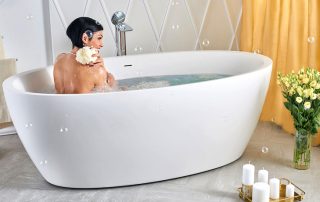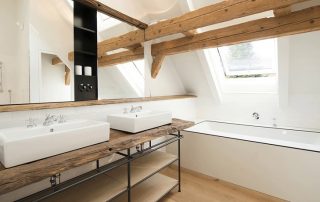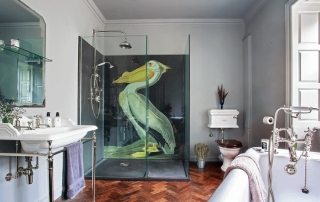The bathroom, as a room with high humidity, has special requirements for ventilation. In other words, ventilation in it should be constant and intense enough to create and maintain a healthy microclimate. There is a device that meets these requirements almost completely - a silent bathroom fan with a check valve.
Content [Hide]
Why do you need a bathroom fan?
Why is installing this particular type of ventilation fan in the bathroom one of the best solutions? Special requirements in the field of ventilation of rooms with a humid microclimate are as follows:
- ventilation should provide air circulation;
- normalization of indoor humidity.
Fact! 25 m³ / hour for a separate bathroom and 50 m³ / hour for a combined one. This should be the intensity of the air flow for optimal operation of natural or artificial ventilation in bathrooms and toilets.
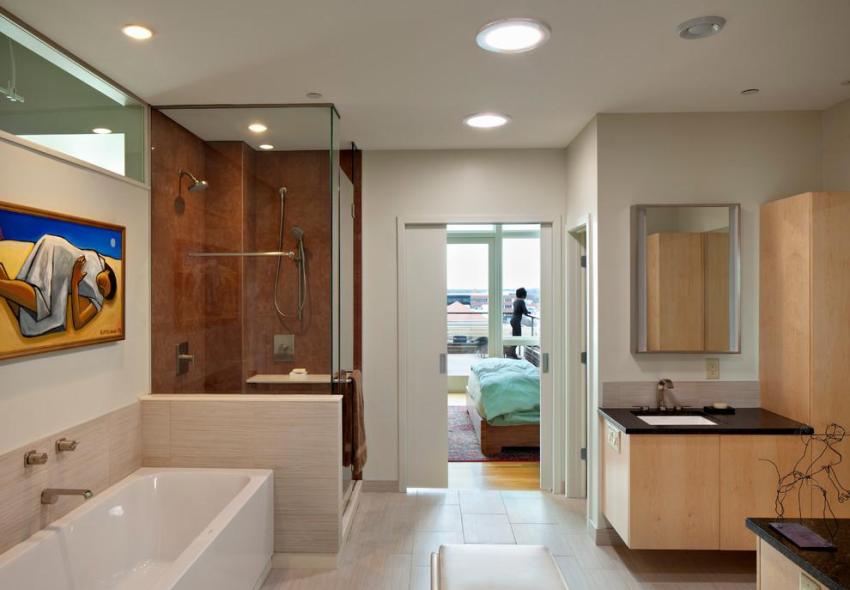
The main requirements for bathroom ventilation are proper air circulation and a decrease in humidity.
High humidity in the bathroom creates an atmosphere conducive to the appearance and growth of mold and mildew, which leads to the destruction of walls, ceilings, floors and their coatings, damage to furniture. Even waterproof equipment is preferable to operate in a dry atmosphere: this ensures safety and increases its service life.
Musty air creates health problems. Insects can also start in a wet bathroom. Finally, unpleasant odors from the ventilation ducts are simply annoying. All this leads to a decrease in the level of comfort and a deterioration in the standard of living in a single room.
What ventilation should be in the bathroom and toilet?
There are two main types of room ventilation:
- Natural supply and exhaust.
- Artificial, with forced air exchange.
Natural supply and exhaust ventilation
Natural supply and exhaust ventilation is one of the typical solutions to the problem of air exchange in most modern buildings, both apartment buildings and private ones. The system operates with a combination of air inlets and exhaust air vents.Air vents in the windows, ventilation slots in the lower part of the doors, and the gaps between the door and the floor serve as inlets. Exhaust openings are designed as vents in the upper part of the walls, near the ceiling, or on the ceiling itself.
The quality of operation of natural supply and exhaust ventilation depends solely on the draft in the exhaust ducts, which is created by the difference in pressure inside and outside. The thrust is created by several factors:
- air intake into the room from the outside;
- air temperature both indoors and outdoors. The rate of air exchange decreases with an increase in the outside temperature;
- the possibility of unimpeded movement of air masses through the exhaust ducts. Dirt, dust, cobwebs, which accumulate in the hood over the years, impede the movement of air.
Inlets in the form of window vents in the bathrooms are most often absent due to the fact that the windows in these rooms are not provided for by the project. The rest of the openings (ventilation slots, openings or slots) in most cases are not able to provide the required intensity of the supply flows.
Conclusion - natural supply and exhaust ventilation is not enough to form the correct microclimate in the bathroom or toilet... Accordingly, in order to ventilate these rooms, it is necessary to install artificial ventilation with forced air exchange.
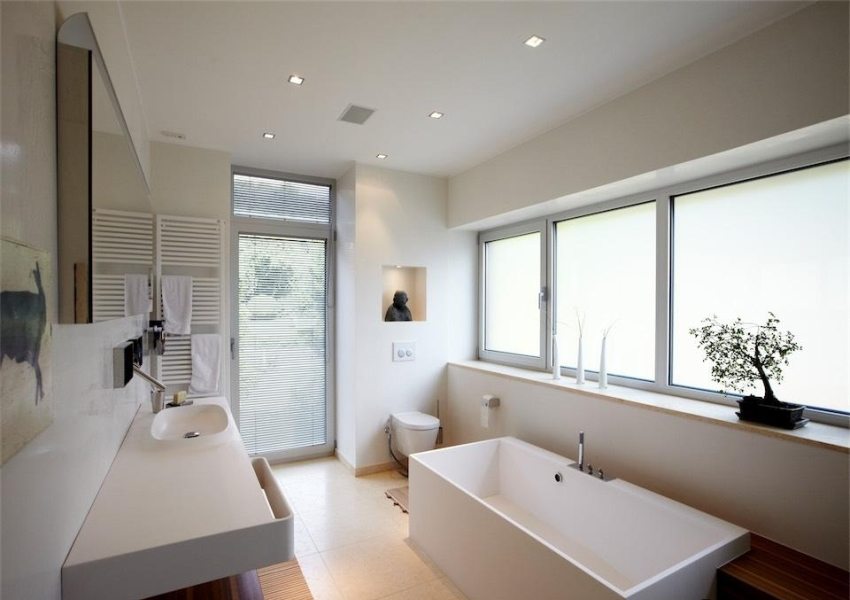
Natural ventilation can be provided by the presence of a window in the bathroom of a private house, but this is not available for most apartment bathrooms.
Artificial ventilation with forced air exchange
There are two types of artificial ventilation:
- Combination of natural inflow and forced air extraction - the so-called supply complex;
- Artificial air supply and natural removal of it from the room - that is, the exhaust circuit.
Related article:
Supply ventilation in the apartment with filtration. Indicators of stagnant air. Types and principles of supply ventilation in the apartment. DIY installation. Helpful hints.
For forced air exchange, a network of air ducts must be installed through which processed air masses are removed from the room. To achieve the air flow intensity necessary to create a comfortable microclimate, such a ventilation system is equipped with fans.
Bathroom fan: selection criteria
At present, the domestic market of construction products offers a wide range of air ventilation devices, both domestic and foreign. What parameters should you pay attention to when choosing an exhaust fan? These parameters are: performance, efficiency and comfort in use.
Performance
To correctly determine what performance to install a fan for a bathroom, you need to know the volume of the room and the rate of air exchange.
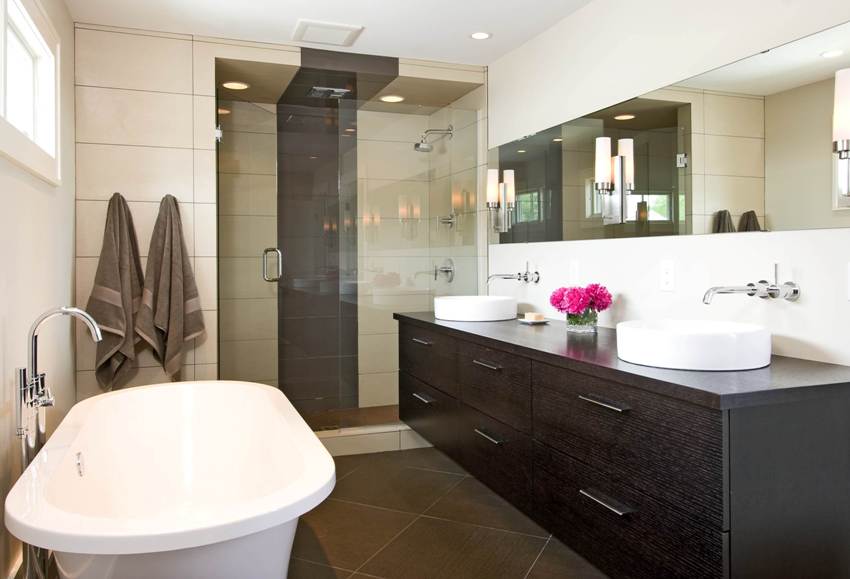
It is better to install the exhaust fan closer to shower cabinwhere natural air circulation is difficult
The air exchange rate is a value that shows how many times per unit of time (in one hour) the air in the room should be changed. It is determined by sanitary standards and depends on the class and purpose of the room. For bathrooms, its value is 6-8.
Advice! A smaller value of the air exchange rate is chosen if 1-2 people live in the apartment, a larger value if the bathroom is regularly used by 3 or more people.
To calculate the required performance of the exhaust fan, you need to multiply the volume of the room by the air exchange rate.

The power of the fan is selected depending on the volume of the room and on the intensity of visiting the bathroom
Profitability
Along with the standard models consisting of classic blades and a switch, you can find fan types with additional functions that make it possible to save energy consumption. The most common uses are humidity and motion sensors and timers.
Humidity sensor
The start and end of operation of the fan equipped with this sensor depends on the humidity level in the room. The fan starts or stops when the air humidity rises or falls to a certain predetermined value.
Such models are preferable if there is a need to save electricity and monitor its consumption.
Motion Sensor
Motion-sensed fans also help save energy by reacting to movement in the room. Accordingly, they turn on when there is someone in the bathroom or toilet, and turn off if there is no one there.
The disadvantage of such models is the possibility of an involuntary shutdown if the person in the bathroom "from the point of view" of the sensor does not move intensively enough. In addition, the time intervals during which ventilation in the bathroom and toilet is on may be too short to fully replace the exhaust air with fresh air.
Timer
A more suitable solution to the problem of choosing between the need to save energy and ventilate the room is a fan with a timer. Such a bathroom fan automatically turns on at a specified time and turns off after a specified period of time. The operating time depends on the volume of the bathroom and the intensity of its use.
Comfort in use
The comfort of using a fan depends on the noise level it generates during operation. It is impossible to find a completely silent exhaust fan. But the sound that modern ventilation devices make does not create discomfort.
Fact! The noise from most modern fans does not exceed 35 decibels.
Silent bathroom fan with non-return valve: basic types and installation features
For a vertically arranged ventilation system in a multi-storey building, the phenomenon of "return" of exhaust air is characteristic. At the same time, unpleasant odors, sometimes together with small debris, penetrate the room from the channels.
To prevent such a phenomenon, it is necessary to install an exhaust fan with a non-return valve in the bathroom. Moreover, various models of such a fan can be equipped with additional sensors (humidity and / or movement) or a timer.
There are two types of bathroom fans: axial and duct.
Axial fans
A fan with an axial principle mechanism is a small propeller with blades that, when rotating, draw in moist air, leading it into the shaft. Such devices are suitable for small bathrooms (up to 15 cubic meters) that are not connected by one ventilation shaft with other rooms. They provide good quality ventilation, are not expensive, but noisier than duct type fans.
Duct fans
An exhaust duct fan is a more advanced device, which is a turbine with a volute placed in a plastic casing.Such a fan actively sucks air inside, quickly and efficiently ventilating the room. Designed for large bathrooms (over 15 square meters), combined bathrooms, with clogged natural ventilation channels.
Duct fans are appreciated for their high performance, reliability and quiet operation. Their only drawback is their relatively high cost.
Installation features
It is best to install a ventilation device with a non-return valve in the air duct of the bathroom exhaust or at the entrance to the exhaust air lock. These holes are usually located in the wall or ceiling in the corner opposite the front door.
The overhead fan model with axial mechanism is fixed directly in front of the ventilation opening.
If a duct ventilation device is used, then it is inserted into the hole and covered with a decorative grill. It should be noted that the duct fan is practically silent during operation due to the fact that its motor is located in the ventilation hole.
To connect the installed device to the mains, lay a cable from the nearest junction box (most often the one above the door to the bathroom). At the same time, it is necessary to follow the rules for electrifying rooms with high humidity, placing the cable in a special protective channel and hiding it behind a suspended ceiling, wall panels or under a layer of plaster.
The Silent Exhaust Fan is a simple but effective device that helps to reduce air humidity, increase air exchange rate and increase bathroom comfort. Modern fans are easy to install and reliable in operation, equipped with automatic on and off systems, and the combination of practicality with aesthetic external design will allow them to be used in any interior.
